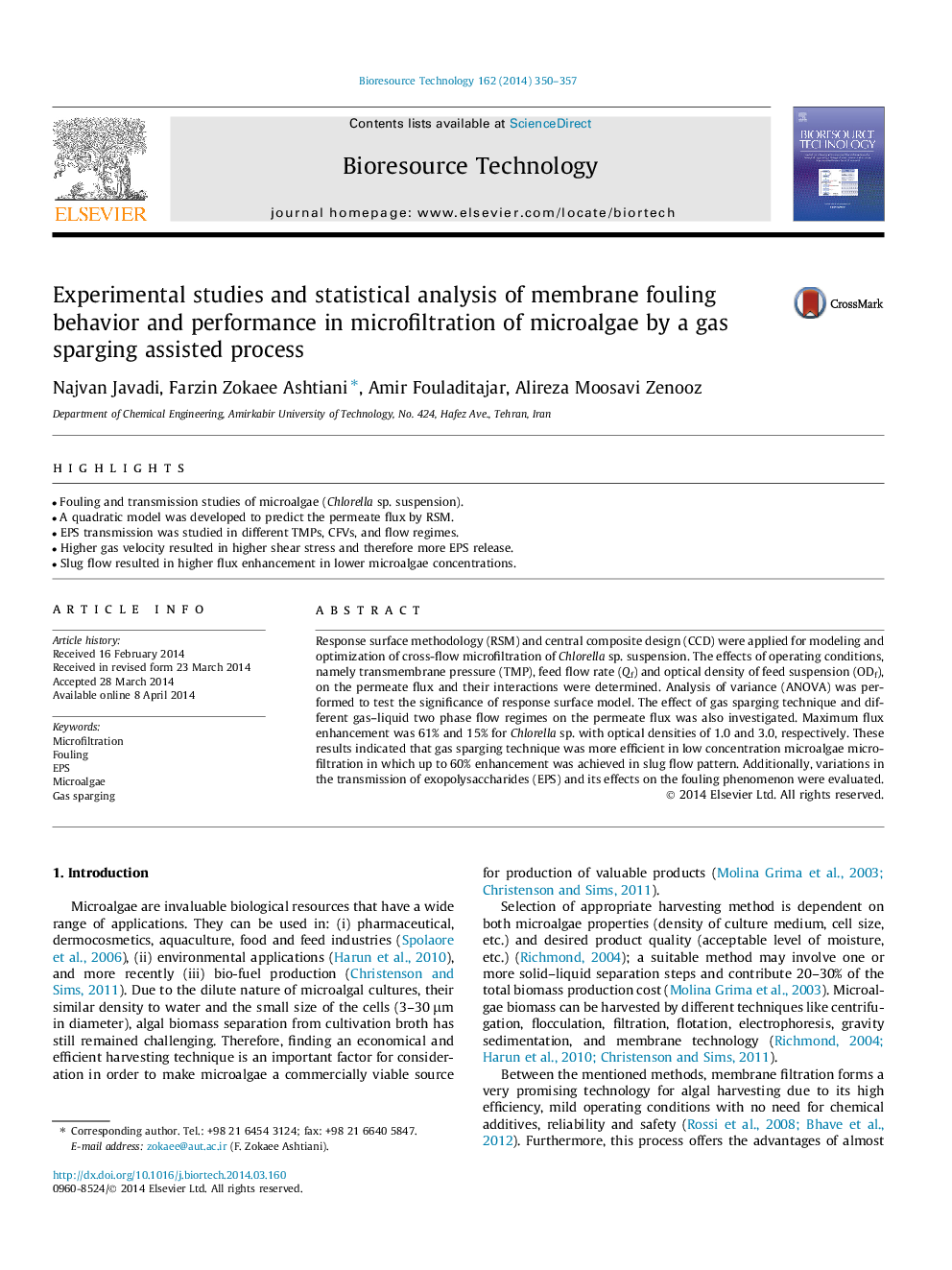| Article ID | Journal | Published Year | Pages | File Type |
|---|---|---|---|---|
| 7078299 | Bioresource Technology | 2014 | 8 Pages |
Abstract
Response surface methodology (RSM) and central composite design (CCD) were applied for modeling and optimization of cross-flow microfiltration of Chlorella sp. suspension. The effects of operating conditions, namely transmembrane pressure (TMP), feed flow rate (Qf) and optical density of feed suspension (ODf), on the permeate flux and their interactions were determined. Analysis of variance (ANOVA) was performed to test the significance of response surface model. The effect of gas sparging technique and different gas-liquid two phase flow regimes on the permeate flux was also investigated. Maximum flux enhancement was 61% and 15% for Chlorella sp. with optical densities of 1.0 and 3.0, respectively. These results indicated that gas sparging technique was more efficient in low concentration microalgae microfiltration in which up to 60% enhancement was achieved in slug flow pattern. Additionally, variations in the transmission of exopolysaccharides (EPS) and its effects on the fouling phenomenon were evaluated.
Related Topics
Physical Sciences and Engineering
Chemical Engineering
Process Chemistry and Technology
Authors
Najvan Javadi, Farzin Zokaee Ashtiani, Amir Fouladitajar, Alireza Moosavi Zenooz,
